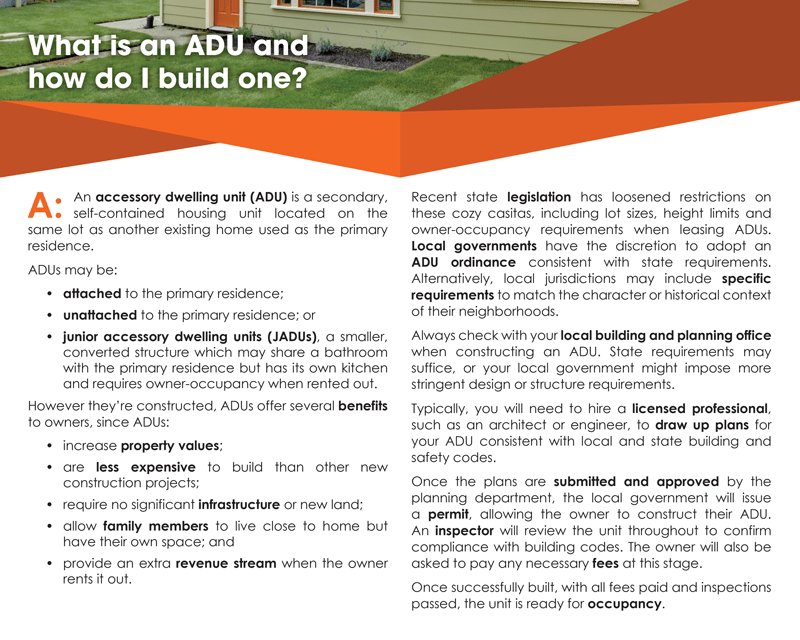Use this firsttuesday Client Q&A Letter in your marketing. To request a letter topic, or to see a list of all our marketing templates, visit our Client Q&A Letter page.

Text only
An accessory dwelling unit (ADU) is a secondary, self-contained housing unit located on the same lot as another existing home used as the primary residence.
ADUs may be:
- attached to the primary residence;
- unattached to the primary residence; or
- junior accessory dwelling units (JADUs), a smaller, converted structure which may share a bathroom with the primary residence but has its own kitchen and requires owner-occupancy when rented out.
However they’re constructed, ADUs offer several benefits to owners, since ADUs:
- increase property values;
- are less expensive to build than other new construction projects;
- require no significant infrastructure or new land;
- allow family members to live close to home but have their own space; and
- provide an extra revenue stream when the owner rents it out.
Recent state legislation has loosened restrictions on these cozy casitas, including lot sizes, height limits and owner-occupancy requirements when leasing ADUs. Local governments have the discretion to adopt an ADU ordinance consistent with state requirements. Alternatively, local jurisdictions may include specific requirements to match the character or historical context of their neighborhoods.
Always check with your local building and planning office when constructing an ADU. State requirements may suffice, or your local government might impose more stringent design or structure requirements.
Typically, you will need to hire a licensed professional, such as an architect or engineer, to draw up plans for your ADU consistent with local and state building and safety codes.
Once the plans are submitted and approved by the planning department, the local government will issue a permit, allowing the owner to construct their ADU. An inspector will review the unit throughout to confirm compliance with building codes. The owner will also be asked to pay any necessary fees at this stage.
Once successfully built, with all fees paid and inspections passed, the unit is ready for occupancy.














